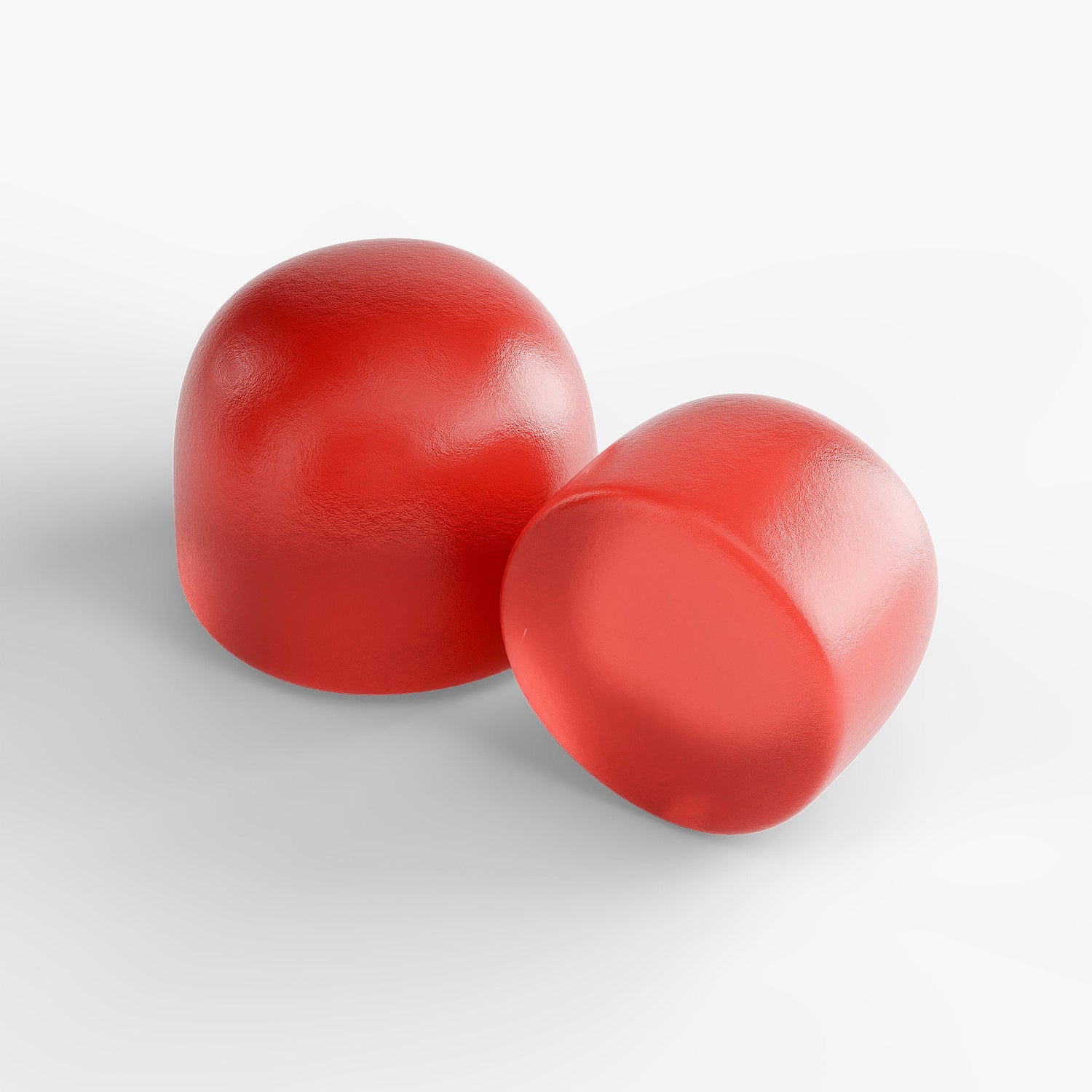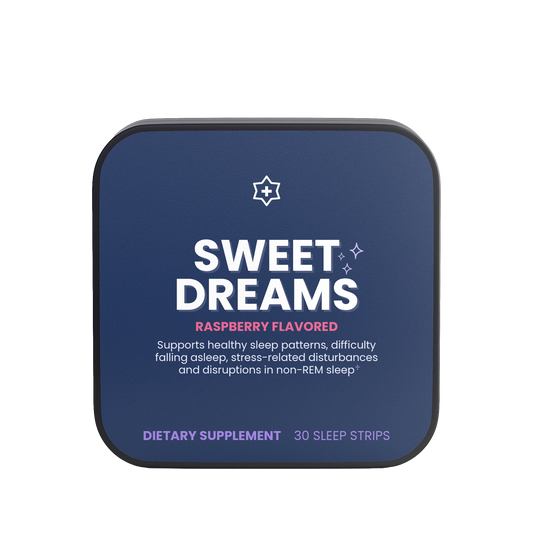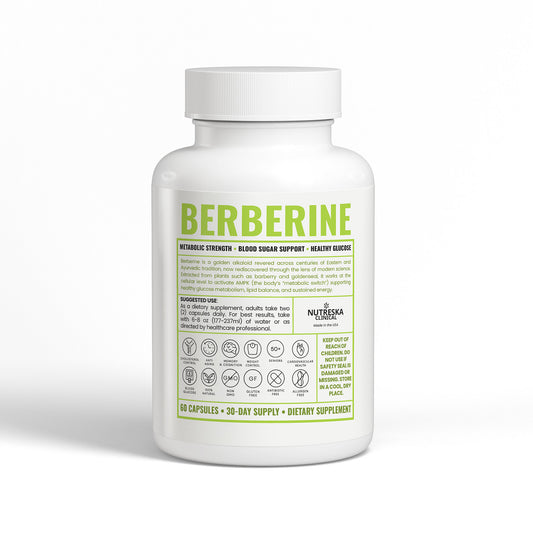The Ultimate Guide to Sleep Supplements: What Works, What Doesn’t & How to Choose
Quick take: Sleep issues are widespread and the supplement aisle is noisy. Low-dose melatonin paired with calming botanicals and nutrients can support natural rhythms; mega-doses and murky “PM blends” can backfire. Use this guide to match ingredients and formats to your specific sleep pattern.
Sleep is no longer just a nighttime routine — it's a modern crisis. If you've ever found yourself scrolling Amazon or pharmacy shelves unsure which bottle to trust, this guide is for you. Millions chase deeper sleep, better REM, and calmer nights—but with pills, powders, gummies, and strips everywhere, it’s hard to know what actually works.
The Sleep Crisis We’re All Living Through
In the age of screens, burnout, and constant notifications, sleep is often sacrificed first. Short-term insomnia affects a large share of adults; chronic sleep issues aren’t far behind. Causes vary—stress, blue light, caffeine, hormones, overthinking—but the outcome is the same: tired, foggy, frustrated.
This fuels a booming market of sleep aids. Some help. Some don’t. Some quietly make things worse. Knowing what’s in your supplement—and how it affects your biology—is critical.
What Are Sleep Supplements, Really?
Hormonal-based
Melatonin—the hormone your brain releases at night to cue sleepiness.
Herbal-based
Botanicals like valerian, chamomile, passionflower that ease arousal and promote calm.
Nutrient-based & synthetic
Magnesium, B6, L-theanine, GABA support the nervous system; some blends add antihistamines or vague “proprietary” mixes.
Melatonin: The Star Player with a Dark Side
Your brain produces ~0.3–1 mg nightly. Many OTC products deliver 3–10 mg—far above physiologic levels. High doses can disrupt your rhythm, blunt your own production, and leave you groggy. As a hormone, excess can ripple into mood, appetite, and reproductive axes. Tolerance can develop—needing more for the same effect.
Low-Dose Melatonin: A Smarter Path
Why it works
Sub-physiologic to physiologic doses (often ≤1 mg) can nudge your clock without forcing sedation—especially when paired with calming botanicals.
How it feels
Sleepier at bedtime, easier drift, fewer next-day “melatonin hangovers.” The goal is rhythm support, not knockout.
Herbal & Nutrient All-Stars (That Actually Help)
| Ingredient | Primary Role | Best For | Notes |
|---|---|---|---|
| Valerian root | Calms CNS arousal | Stress-related wakefulness | Often paired with lemon balm or hops |
| Chamomile (apigenin) | Gentle relaxation | Difficulty winding down | Well-tolerated; tea or extract |
| GABA | Quiets mental “tabs” | Racing thoughts, 3 a.m. wakeups | Often combined with L-theanine |
| L-theanine | Smooths stress response | “Tired but wired” evenings | Daytime calm without sedation |
| Magnesium (glycinate) | Muscle + nervous system support | Restless body, tension | Glycinate form is gentle on GI |
| Vitamin B6 | Neurotransmitter cofactor | Sleep quality support | Works well in balanced stacks |
Why “more” isn’t better with calming stacks
Layering too many sedatives can cause grogginess, dependence, or paradoxical effects. Aim for synergy at reasonable doses, not a kitchen sink.
What to Avoid in Sleep Supplements
- Proprietary blends that hide actual dosages
- Melatonin > 3 mg as a nightly habit (jet lag exceptions aside)
- Diphenhydramine “PM” formulas for long-term use—effective, but habit-forming with next-day fog
- Overly sweet gummies with high sugar or artificial dyes
If you wake groggy, dream too vividly, or keep increasing dose, your current product may be working against you.
Match Ingredients to Your Sleep Pattern
Can’t wind down
- Low-dose melatonin (≤1 mg) + L-theanine or chamomile
- Dim lights 90 minutes before bed
3 a.m. wakeups
- GABA + valerian; small protein snack if blood sugar dips
- Keep room cool and dark
Tired but wired
- Magnesium glycinate + L-theanine
- Cut caffeine by early afternoon
Formats: Strips vs Gummies vs Capsules
Strips
Fast dissolving, quick onset, precise low dosing—great for gentle melatonin delivery.
Gummies
Tasty and convenient, but watch sugar and hidden high doses.
Capsules
Clean labels, controlled blends, and easy to keep stimulant-free. Ideal for botanical stacks.
Liquids/Tinctures
Flexible dosing, good for botanicals; verify alcohol content and quality.
The Nutreska Approach: Work with Your Body
At Nutreska Labs, we design sleep support around low-dose melatonin (≤1 mg) and calming botanicals—to support rhythms, not override them.
NIGHTCAP™ Sleep Strips
- 1 mg melatonin + soothing botanicals
- Fast dissolve; non-habit-forming
Sweet Dreams Gummies
- 2 mg melatonin + gentle extracts
- Great taste; mindful sugar
REM Sleep Support
- Botanical-forward (valerian, L-theanine, etc.)
- Just a touch of melatonin
FAQ
Is high-dose melatonin ever appropriate?
Occasionally—for short-term needs like jet lag or shift changes. As a nightly habit, stick to low doses to avoid rhythm disruption and next-day fog.
How long until I notice results?
Many feel changes in a few nights; deeper improvements (fewer wakeups, steadier mood) often build over 1–2 weeks with consistent use and good sleep hygiene.
Can I combine magnesium with melatonin?
Yes—magnesium glycinate pairs well with low-dose melatonin and calming herbs. Always follow label directions.
Educational use only. Not medical advice. If you are pregnant, nursing, have a medical condition, or take medications, consult your healthcare provider before using any supplement.










